The Soylent Killer
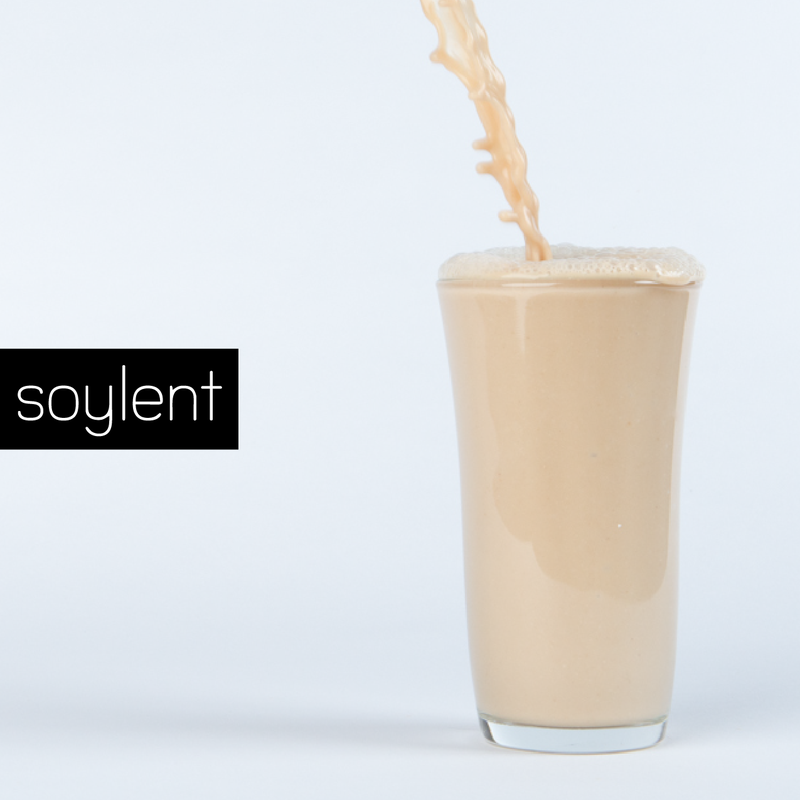
2022 Update: After the 2017 ban (described below), Soylent returned to Canada in 2020.
2017 Update: Oh Soylent. You started out with a fight as the founder declared Soylent the future of food, or maybe it was supposed to be the end of food as we know it? This post was first published in 2014 when Soylent hit the scene with a ridiculously and unfortunately, very successful Kickstarter. Soylent has since faced numerous recalls as Soylent drinkers have faced everything from digestive upset to grey diarrhea, all the way to hospitalization from aggressive vomiting due to one of their new products that was affectionately named “The Barf Bar”. Nice. Send some over. Since publishing this post, I have been interviewed by the Globe & Mail, The Toronto Star and numerous publications from around the world — from France to Japan.
That’s not all. Since I posted the below, declaring Soylent not really food, there have been numerous Reddit feeds formed around criticizing my credentials. It’s a curious approach when all I have done below is outline how Soylent is not an adequate meal replacement because its component parts aren’t really what we might consider ‘food’. Effective October 26th, 2017, it seems the Canadian Food Inspection Agency agrees with me. What makes up Soylent are ingredients that have macronutrient value, but no one would ever elect to eat any one of its ingredients on its own. Soylent is not the future of food. Instead it exemplifies the epitome of laziness and self-care, and millennials should be offended that this is all what Mr. Rhinehart thinks you are worthy of, or capable of eating.
Original Post Follows with updates at the bottom.
Have you heard about this “Soylent” beverage that’s been working its way around the internet?
I would have never known about this toxic beverage if the design team who built the first bit of our Academy of Culinary Nutrition website hadn’t asked me about it.
What is Soylent?
This drink was first introduced through a Kickstarter campaign (that I won’t link to) and will either end in a recall due to anal leakage or starch overload, or be the next horrendous drink to be pushed by dieticians who also believe that Ensure can stand up to a complete meal any day (or for any disease).
We aren’t talking about Soylent Green, although the barf factor of this version is similar to the corpse-based original. Soylent is a food substitute designed to supply all of the human body’s nutritional needs. Apparently.
While some sources claim that Soylent isn’t meant to replace food altogether, the marketing campaign sure seems to imply it. Thanks to my looking into this product, all I’m getting on Facebook are ads that say: “What if you never had to worry about food again?”
I’ll take my “worries” about trips to the farmer’s market and days playing in the kitchen over chugging back a chemical-based beverage three times a day, thank you very much. If I never had to think about food again, then I’d be worried!
After tens of thousands have been raised essentially sight unseen, the Soylent boys have finally posted nutritional information.
Let me break this down for you!
Maltodextrin
Maltodextrin, the first ingredient on the list, is an artificial sugar that is derived from either wheat or corn, with corn being the standard in the United States. Unless otherwise specified, the maltodextrin is likely coming from GMO corn with all the associated health risks.
What some may consider a winning point on maltodextrin is how absorbable it is (like straight glucose). And this is exactly the main problem – the sugars that absorb rapidly will also spike the blood sugar, increase insulin secretion, followed by a cascade of stress hormone release that all serve to increase inflammation in the body and reduce our capacity to deal with the world in a sane way. No joke. One of the best quotes I found about maltodextrin: “While wheat-derived maltodextrin may cause concern for individuals suffering from gluten intolerance, maltodextrin is such a highly processed ingredient that the majority of the protein is removed, rendering it effectively gluten-free.” Um. Great?
Get empowered! Enjoy this directory of Healthwashing resources that will empower you to understand food labels.
↓↓↓
Free Resource Library
Enjoy more than 40 downloadable guides, recipes, and resources.
Synthetic Vitamins
The ingredients listed may technically meet 30% and 40% RDA levels, but are they affecting blood levels in our body? The forms of nutrients listed are the least absorbable and least bio-active, meaning, in plain English, the body won’t have a clue how to use them.
For example, Soylent uses vitamin D2 (as ergocalciferol) which has poor conversion into the active form vitamin D in the body and studies have shown it be harsh on the kidneys. The active form of Vitamin D is actually D3 (cholecalciferol), which can be readily used. These isolated nutrients with low absorbability potentially become toxic to the organs that need to filter through this garbage, namely the liver and the kidneys. Much like Ensure, they are simply using the cheapest forms of each vitamin. You get what you pay for. If you are interested in learning more about the various types of nutrients that can be found in vitamins and vitamin enriched foods, click here.
Soy lecithin
Soy lecithin has been found to be extremely estrogenic. That means it functions like estrogen in the body and can cause hormonal imbalances. So while all these dudes are sipping on their Soylent while gaming, they could also potentially be shrinking their junk and growing breasts. It’s a thickening agent and emulsifier and, unless specified otherwise, it likely comes from genetically modified soybeans. GMO foods have been linked to allergies, liver problems, infertility and sterility, breast cancer, thyroid disorders, kidney stones and more.
Gum arabic
Gum arabic can cause gas, bloating, nausea and loose stools. It’s a stabilizer that’s used to give processed foods their long shelf life and is commonly used in soft drinks.
Vanillin
Vanillin is a cheap substitute for vanilla that comes from — wait for it — a beaver’s ass. Literally. As in, “the exudate from the castor sacs of the mature North American beaver.”*
Correction: As many Soylent fans pointed out – Vanillin doesn’t in fact from Beaver bum sac, that would be straight up Vanilla, Vanilla Flavour and/or Natural Flavour. What actually is found in Soylent is Vanillin which is either derived from wood pulp or synthesized in a chemistry lab. Our apologies for this misrepresentation.
Sucralose
Sucralose is not food. It is an artificial sweetener (read: fake chemical mess) with a looooong list of studies cataloguing its health risks. Here’s just a few: “In rats, sucralose alters the microbial composition in the gastrointestinal tract (GIT), with relatively greater reduction in beneficial bacteria.” In that same study, researchers found that cooking with sucralose at high temperatures resulted in a potentially toxic class of compounds, and that sucralose may alter glucose, insulin, and glucagon-like peptide 1 (GLP-1) levels in both humans and rats. Researchers in this study dubbed sucralose “not a biologically inert compound.” No kidding. Read more on artificial sweeteners here.
Canola oil
Like corn and soy, canola oil is most likely genetically modified unless otherwise specified. When choosing your oils, you have to ask yourself – does this oil come from a naturally oily source? Olives, coconuts, butter — oily. Canola? Not so oily. That means a heck of a lot of processing needs to happen in order to turn canola into oil. Plus, a 2009 study found that canola oil shortens the life of stroke-prone spontaneously hypertensive rats. Not exactly something I would choose as my primary source of fat. This omega 6 oil is highly pro-inflammatory in the body.
Fish oil
I can support supplementing with high-quality fish oil for omega-3 benefits when it’s from a very clean and purified source, but just how high-quality is the fish oil going to be in a mass-produced beverage? We’re not sure which fish this oil is coming from, but we wouldn’t want to eat them. Rancidity amongst fish oil, even some quality brands, is very common. To avoid this, many commercial brands add more preservatives to lend some shelf life to an oil that is naturally sensitive to heat, light and oxygen. Think chemical fish juice storm.
It’s completely understandable to want to simplify your meals. This beverage, however, is not an option – unless maybe you are in outer space and all your freeze dried food has been consumed and this is the only thing you have left. But then again, with this much starch, artificial sweetener, gums and emulsifiers, it may be best not to consume potentially diarrhea-inducing food in space.
Eat real food! There is nothing more important in your day than what you choose to fuel your life with. It will impact every other facet of your day and subsequently, the quality of your life.
Make your own meal replacement with a high speed blender, some spinach, some protein powder, a banana and some blueberries. It doesn’t get much easier (and healthier) than that.
Print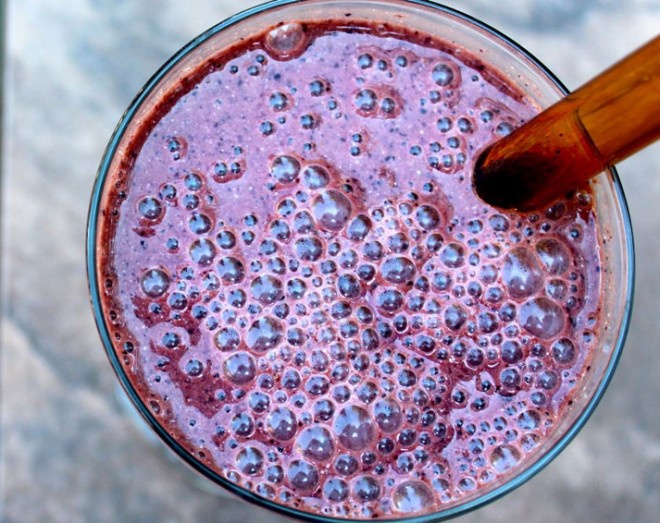
Simple Smoothie 5-Day Prep
- Total Time: 10 mins
- Yield: 5 smoothies 1x
Description
Make your nutritious smoothies for the week all in one go!
Ingredients
- 5 bananas (note – can reduce banana and swap for other fruits if desired)
- 5 scoops Genuine Health Whole Body Nutrition (or a greens powder you love)
- 5 scoops Sunwarrior (or brown rice, pea, collagen protein powder of choice)
- 5 handfuls fresh or frozen spinach
- 2 1/2 cups fresh or frozen blueberries
- 10 Tbsp flax, chia, or olive oil
- 10 cups water
- 5 doses professional brand multi-vitamin (such as Pure Encapsulations, Douglas Labs, Metagenics, Integrative Therapeutics)
- 5 – 1/2 litre mason jars
Instructions
- Line up your five clean mason jars, lids removed.
- Into each jar place one banana, 1 scoop of green powder, 1 scoop of protein powder, 1/2 cup blueberries, 2 Tbsp oil of choice.
- Seal this jar and place it in your freezer.
- Each night, take one jar out of your freezer and place it in the fridge. In the morning, dump contents of jar into your blender and add 2 cups of water or dairy-free milk. Blend until smooth.
- Pour back into your jar, seal the lid and go.
- You can drink this to replace one meal a day, not 21 meals a week!
- Take one dose of your multi-vitamin each day.
- Prep Time: 10 mins
- Category: Beverage
Update August 11 2014: We have been informed that Soylent recently put a hold on shipping after recipients complained about flatulence and headaches after consuming the product. They have recently begun shipping it again, along with advice for “optimizing the Soylent experience” which includes avoiding using it as your main source of food without giving your body time to “adjust.”
Update August 26th, 2017: The Canadian Food Inspection agency has notified Soylent that its “meal replacement” products do not actually meet the requirement of what food actually is. The product has not been recalled in Canada, but shipping into the country has been halted until Soylent meets the requirements. I am not sure how they plan to make maltodextrin, the primary ingredient in their mix, into food, but they’ll figure something out to ensure the grey diarrhea can go on. Read more here.
Free Resource Library
Enjoy more than 40 downloadable guides, recipes, and resources.













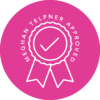

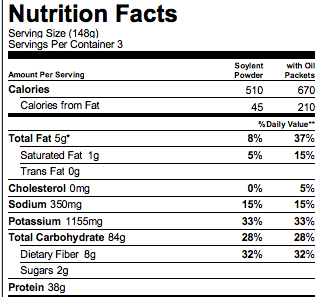
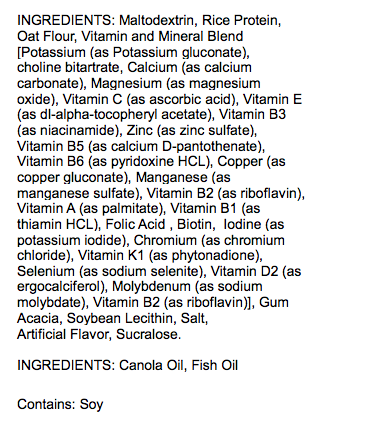

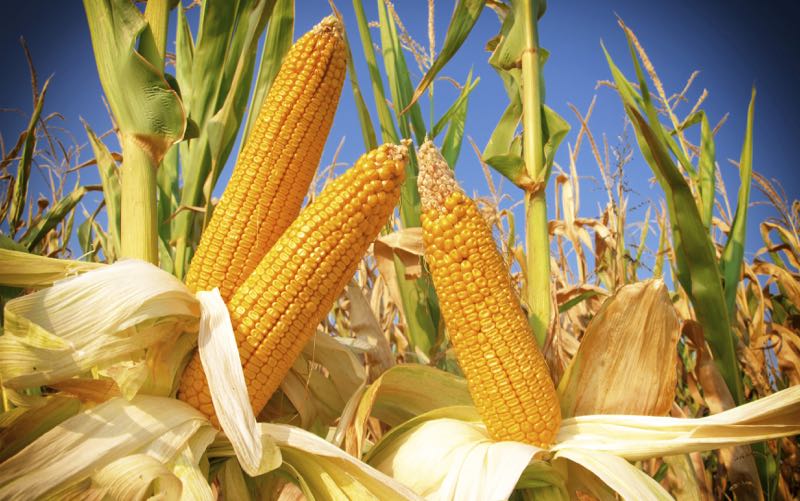




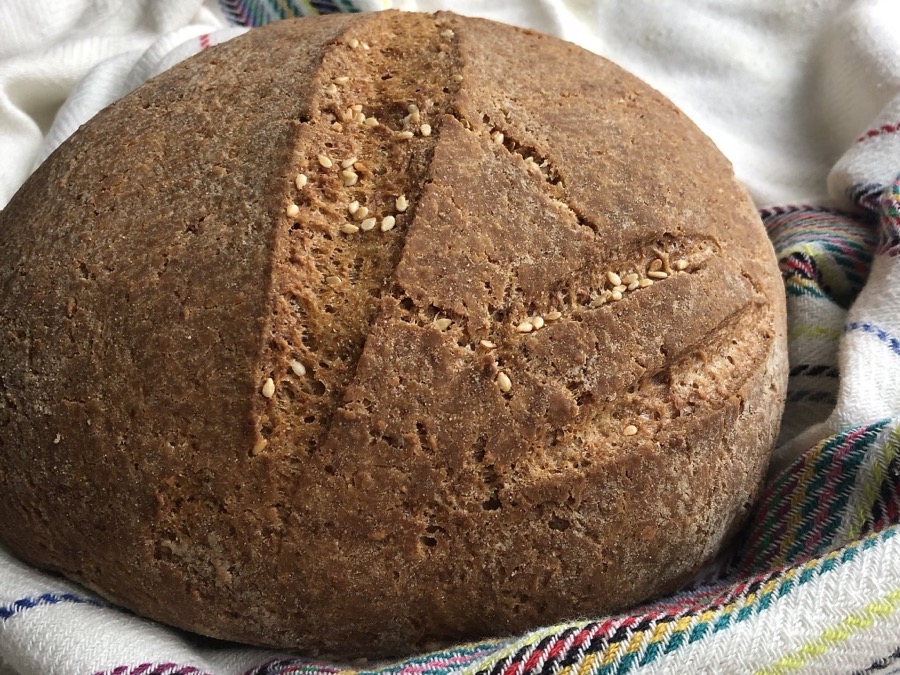

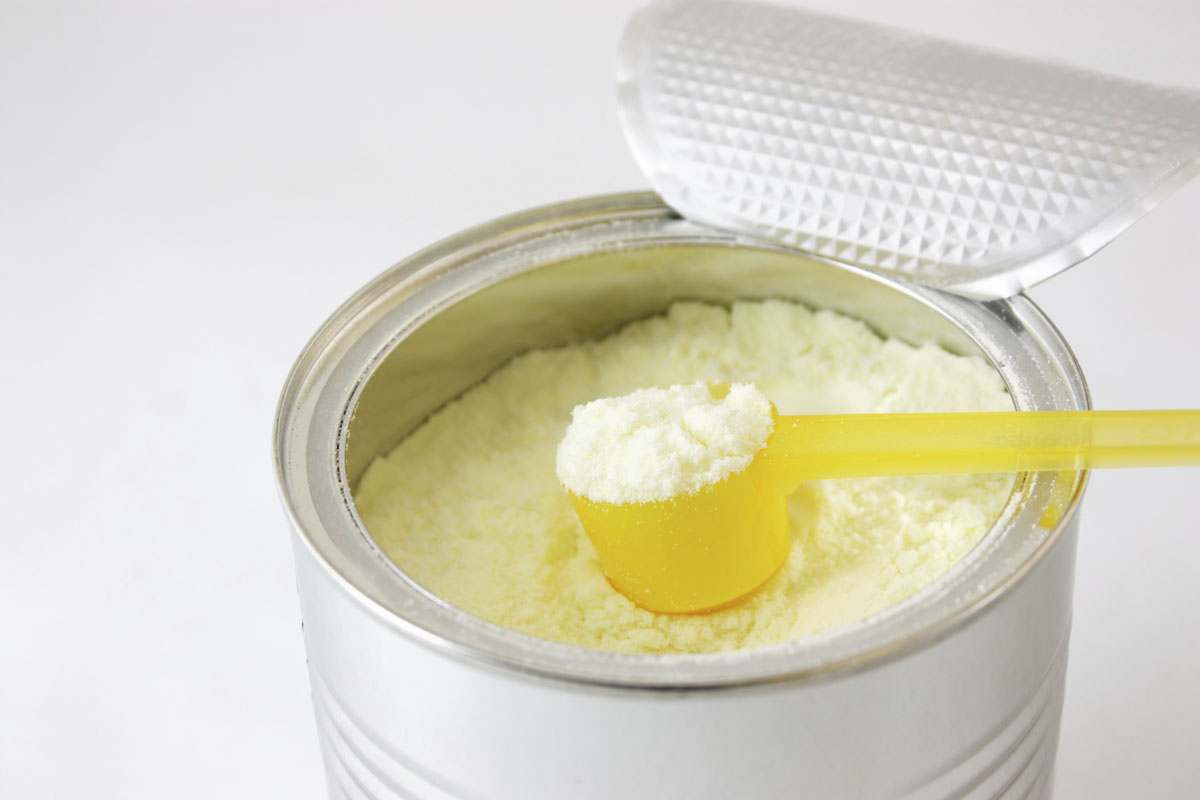
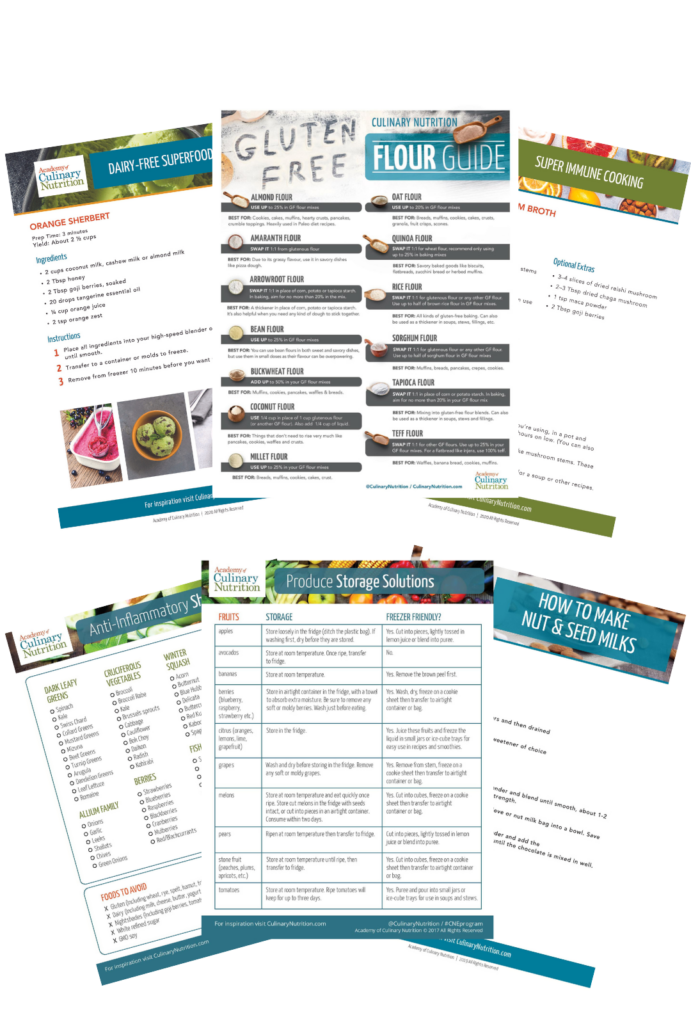
Ok, WHAT?!! “What if you never had to worry about food again?” I can’t even begin to understand why anyone would give up glorious, beautiful, colorful, nourishing food and replace it with complete nonsense. This scares the living daylights out of me. I’ve never heard of Soylent, and I hope to never come across it. Ever.
Sometimes I get tired of preparing food, but then I just go to a restaurant. Real food kicks butt.
Vanillin is a single chemical compound, 4-Hydroxy-3-methoxybenzaldehyde, that can be won from a by-product of the paper industry. Not sure if this is better than beaver parts, but it is certainly cheaper.
Interesting article! Good read, and I’ll definitely do some learning of my own after reading it.
I’m a backer of Soylent, 26m, who can cook but prefers not to all the time. I don’t plan on giving up food, I plan on using soylent as a one or two meal a day replacement. I like the idea of soylent, half because I’m lazy and half because it’s marketed as being healthy for you. It’s super convenient and fast as well. Because something is GMO, is it going to kill me? Maybe eventually, but nowadays what isn’t?
That being said, I am no expert. Vanillin is not beaver butt, and sucralose is pretty terrible I understand and I don’t like that they included it in Soylent, as it was not a part originally. I’m disappointed about that myself.
Hello, we are talking about your blog over on the soylent forum.
It seems that most of the people who have researched soylent, both as Do It Yourselfers, and the general fanclub of people looking forward to trying soylent, find your blog about soylent to be mostly wrong… and badly researched, there is some truth to the vitamins about bioavailablity, but the rest of it is mainly fear mongering. As part of our Soylent community, we are very interrested in the affects of each individual part of the soylent, we talk about all the risks, benefits and such… what to use for our own soylents and about all the possible bad things that is bad to put in Soylent… When we all heard they were planing to put Sucralose in the Soylent, many people objected, but after some reasurance about the very very small amount that is put in… most of us are not worried at all. There is a long post about it on the forums at http://discourse.soylent.me/t/so-the-sucralose-thing/10860/5 for an example. Also… just because something is “GMO” doesn’t automaticly make it bad… it simply means that a gene has been changed in the product/thing/plant… Most of us have come to the conclusion that Soylent is way healthier than what we already eat… but sure if your eating healthy already then just keep doing that.
I fail to see how what you are advocating is any different, other than the fact you have no nutritional breakdown for your ‘meal replacement’. You trash on powdered meal replacements, and then tell people to dump numerous scoops of different powders into a blender.
You seem to be operating on the assumption that everything used in soylent will be of the absolute lowest possible quality available and I’m not exactly sure where that idea is coming from.
Vanillin is naturally occurring in plants, and can also be chemically reproduced in a lab. You are confusing Vanillin with Castoreum. Please update your article.
Interesting article. I agree with your premise.
A few things i thought were interesting:
– Maltodextrin is not technically a sugar, which leads to some of the problems you mentioned. Studies show that it enters the blood at approximately the same rate as dextrose (the monomer equivalent). So you are correct in that it is probably not an appropriate source of CHO for the majority of consumers. I also like your view on it being gluten-free. Being gluten-free does not make a high glycemic CHO a better choice (I don’t even know how many times i’ve tried to stress this to someone).
– I would say that soy lecithin is probably not going to effect someone’s estrogen levels at the dosage contained in this product. Dosage is everything. It is quite low on the ingredient list and science is showing that it takes much larger quantities to elicit adverse health effects.
– I don’t like products with sucralose when they are meant to be consumed multiple times / day. Again, dosage is everything.
– I respectfully disagree with your take on canola oil. Canola oil comes from rapeseed, and rapeseed actually has quite a high fat content. Regardless, the fat percentage of the original product will determine the yeild, but does not necessarily determine the type or amount of processing necessary to obtain the final isolated product. Also, it is actually primarily an omega-9 monounsaturated fatty acid (oleic acid). Its omega-6 fatty acid levels are quite similar to that of olive oil.
A study done on rats 5 years ago who consumed an irregularly high diet of canola oil may not be so relevant to humans with a regular diet.
– Finally, and what I would consider maybe the biggest problem with the product. The only significant source of protein is rice protein, which has a low biological value, and even more importantly is an incomplete protein! I’m not sure why they wouldn’t have used a higher quality protein. With fish oil as an ingredient, the product already isn’t vegan, they might as well have used a whey protein which has a biological value through the roof and a complete profile of essential amino acids.
Great breakdown of this product in your article.
Great blog post Meghan! Love the sarcasm! Spot on all of it! All my best! Ciara
Beaver’s ass. That’s disgusting! The places they think is an acceptable place to make food and beauty products blows my mind! Like what ever gave ya that idea anyway?
Ok, first… Vanilla comes from a seed pod that grows on an ORCHID. Not from beaver castor sacks, lol. It’s sometimes used as a component of substitute vanilla, raspberry, etc flavoring. However, if a product lists vanilla as an ingredient, it contains VANILLA – the plant. Vanillin is not the same as castoreum, however. (Honestly, we eat all sorts of things that are gross; we’re just used to them. At least castoeum is natural).
The real point of my comment, though, is to help you realize that Soylent isn’t supposed to replace a healthy diet of locally sourced organic foods. It’s supposed to replace a microwave burrito. This is a healthier alternative to processed salty fatty crap and fast food that people who have neither the time, nor the money, to prepare real food are currently eating.
No amount of wishful thinking is going to change that for them. They don’t have time to cook. They don’t have the money to buy all fresh food, and, on top of that, many of them simply don’t enjoy preparing food. Soylent needs work to make it healthier – NO ONE was actually happy with their decision to use sucralose, for example.
They can improve and tweak their formula later on. For now, even as it currently is, Soylent actually serves the purpose it was intended to serve – it’s a healthier meal than a microwave burrito. Even you cannot deny that.
I’d heard of this whole soylent thing online and was skeptical. On one hand, I am a ‘picky’ eater… I like all my food fairly plain and I never stray too far from the things I know I’ll like. On the other hand, this is a bit problematic because eating the same foods all the time means I’m doubtlessly missing out on some of the nutrients I need. When I was a small child, I was being raised by a broke single mother who couldn’t afford anything but the cheapest foods available at our local grocery store. As a result much of my childhood meals consisted of things like Kraft macaroni and cheese, spaghettios, grilled cheese, peanut butter and jelly sandwiches, and the occasional pizza. Breakfast was either cereal, toast, or oatmeal — probably the only particularly nutritious meals I ate as a kid. By the time I was a little older and my mom had gotten a better job and a live-in boyfriend to help our financial needs, I had already grown accustomed to my simple foods. Whenever we went out to a restaurant I would order the same few things — either chicken fingers, mac n cheese, or grilled cheese. I was so set in my ways that I’d never even had a hamburger — an American staple — until I was around 14 or 15. I often ordered off the kids’ menu until I was about 13. My point is, I’ve always eaten certain things and avoided pretty much everything else, and now that I’m old enough to know and really understand that this isn’t healthy (I’m almost 19), I have no idea where to begin to change it.
I’m still young. I’m not overweight — I’m 5’7, 136lbs; but I know this is by virtue of my youth, and that I can’t keep this diet for the rest of my life without consequences. I want to change this soon and settle into the habit of eating well, so that I don’t have to suffer in the future. But as I said before, I don’t know where to start. So to someone like me, the concept of Soylent is very appealing — I could simply chug a drink a few times a day and not be hungry or have to deal with food? If it were really that simple, I’d say sign me up. But realistically I know it’s not; nothing is that perfect. I was interested in the initial idea of Soylent, but I had a feeling that the actual execution of this idea would not be up to par. Sure, I did allow myself to fantasize about it a little bit — I could just have this drink as my main ‘meal’ and use it as a way to manage my eating (if I had one or two meals a day taken care of, it would be easier to start transitioning to healthier food). I could do this for a few months, combined with at minimum tri-weekly exercise, get down to a better weight, and wean myself off the stuff and settle into eating healthy food primarily.
I know it’s hard for most people to imagine something like Soylent — let’s ignore, for a moment, whether or not it’s beneficial in the long run — being desirable. Because most people get a certain degree of enjoyment out of preparing and eating their favorite foods. Most people can’t really imagine just drinking something a few times a day and never eating those foods. But unfortunately for me, I’m not like most people. I’m in a minority, I believe, that sees food as an obstacle to be overcome day after day. Because I’m aware that what I eat generally isn’t healthy, and even when it’s not detrimental to my health, it’s not beneficial to it, either. To me it would be amazing to substitute the majority of my meals for a simple drink. But it seems like actually doing so is quite difficult.
Case in point, the Soylent alternative mentioned in this article. The smoothie? It piqued my curiosity. I clicked both of the links in its description. The first product, on amazon, was selling for $96.10. Ok… I’m an 18-year-old college student. My first thought was, “I can’t afford that.” Then I thought about substituting it for something else, but I noticed there was another product of the same brand being sold for $3.99. “I can work with that.” So I clicked on it, and it was a single serving. Alright… Not ideal, because I’d have to order several just to last me the whole ‘five days’ mentioned in this article, but… I can figure something out. Then I looked at the next link, for Sunwarrior. $65.99. “Jesus Christ.” There’s no getting around this.
Now yes, I understand the old adage “you get what you pay for”, but… I’m 18 years old. I don’t have a high paying job. I’m not totally independent yet. I’m working on all of those things, but everyone has to start somewhere, and I can only do so much at one time. And I’ve come to realize that this is part of why I struggle with eating healthy. Because again, you get what you pay for and the cheap foods are also the lowest quality. I thought substituting a meal a day with a smoothie was a great idea. But now it seems like just another idea that can’t really come to fruition for me. And I apologize if I’m coming off as a bit of a pessimist — I do tend towards pessimism, but on the bright side (ironic using those phrases together, I know), being pessimistic has made me consider things more carefully, for whatever reason.
So I’ve probably typed up a whole novella by now, but I guess all I’m trying to say is this: I don’t think Soylent is a feasible long-term option for anybody, myself included; but, while I do think the smoothie alternative could be a good, healthy option, the price tag means it’s not one for me. And I don’t know what other, cheaper products I could swap out for the ones listed because I have no experience with them. And, pardon my French, when you can’t afford the shit you want, you wind up with what you don’t — and that, too, amounts to shit. :(
I so agree with you! Nutrients act in synergy, so I can only imagine that there would be long-term side effects of only drinking this. I’m a dietitian, and I would never recommend this (or Ensure!) but instead usually help clients make their own smoothies. Homemade smoothies can definitely be affordable and full of nutrients. I work a lot with food sensitivities, and people can be sensitive to any number of ingredients (especially those derived from soy or corn). Yes, dietitians may use Ensure in the hospital because there’s no option to make homemade smoothies (unless a patient has a blender in their room), and it’s better than a patient not eating anything. Otherwise, I don’t know any dietitians who would recommend it!
Meghan,
A similar but I believe a healthy version of a Soylent like product can be found here:mealsquares.com/nutrition-info.html.
(Unfortunately-it isn’t available yet.)
Opinions about this? I for one hope for a healthy type Soylent food comes out as it would be great to have on hand for the occasions when one doesn’t have the time for meal prep or even eat for that matter. Thanks.
You know what I’m wondering about? I already knew that Vanilla came from a beaver’s butt, but I’d never thought before about WHO THE HECK FIRST DECIDED TO TAKE OUT VANILLA FLAVOR FROM A BEAVER’S BUTTHOLE?!
I just see this as so wrong on so many levels, the marketing is very typical of American junk food marketing — we fall for anything because we stand for nothing. You are so hectic, tired, stressed, etc. you need our product that will make you more hectic, tired, and stressed. Please see any fast food/junk food ad ever — you need McD’s, Subway, a bowl of sugar for breakfast, et al, because. Its just another form of fast food, its just the new kid on the block.
Soylent=YUCK. I avoid anything GMO (like the soy and canolo oil) and sucralose. From http://www.medicalnewstoday.com/articles/262475.php “Splenda (sucralose) is being downgraded from “safe” to “caution” after an Italian animal study linked sucralose to a higher risk of developing leukemia.” I wonder what the artificial flavor is. I notice there is no B12 (cobalamin).
One hallmark of a poorly-constructed argument is that it resorts to name-calling early and often. I haven’t tried Soylent, although I’m intrigued by the concept, but calling a mixture of vitamin supplements “toxic,” and predicting “anal leakage” despite many people drinking this stuff with no such effects doesn’t sound like you’ve examined Soylent closely and drew conclusions based on what you learned. It sounds like your starting point was a desire to trash a new idea at all costs. Whether that’s the case or not I don’t know, but the whole thing reads like someone with an axe to grind, not someone who drew conclusions based on facts.
Really interested in this article, as I just backed Soylent. I’m a managing partner in three start ups that are all growing rapidly, and have very little time for food, although food is perhaps one of my greatest passions. Your smoothie sounds extremely delicious but is also time consuming. I’m definitely not too concerned about the finances when it comes to soylent, but the concept of not having to try to find decent food for at least lunch and dinner (my automatic rice cooker making oat meal with tons of dried fruits takes care of breakfast) would be reaaaaaaalllly nice.
[…] many people think of eating as an inconvenience. They seek out quick options, and even go as far eliminating eating food completely. We have become disconnected from not only what we’re eating, but just as important, how […]
[…] qu’un simple "ça n’a pas marché pour moi". Je suis récemment tombé sur un article d’une nutritionniste canadienne : Meghan Telpner. Cette dernière n’a pas testé le produit et s’attaque en fait à ses […]
[…] Soy Lecithin. Perhaps once in a while, this commercial emulsifier would be fine. But every meal of every day? I would be very worried. In the eloquent words of Meghan Telpner in her article “Soylent Killer“: […]
[…] Try this: Easy Peasy 5-Day Smoothie […]
[…] glycemic load to keep your hormones in check, eating an overall clean diet, avoiding the horrors of estrogenic soy products and getting yourself off that awful […]
[…] It’s also, potentially, a cost-effective option for basic nutrition. The original recipe has been critiqued based on nutritional and political grounds, however the recipe was open-sourced, improved, and been […]
[…] Meghan Telpner – The Soylent Killer […]